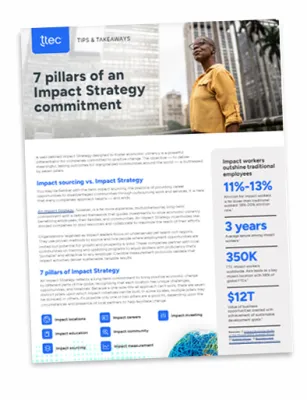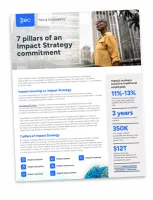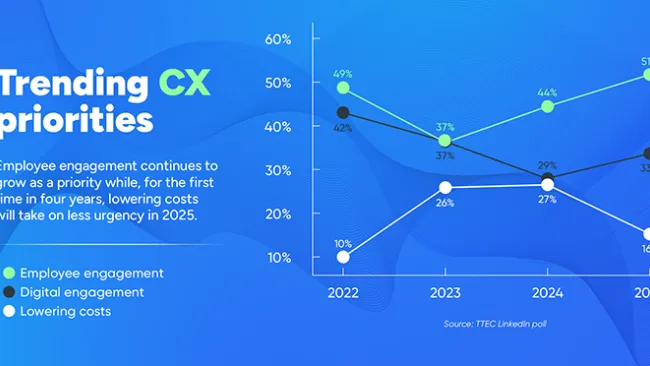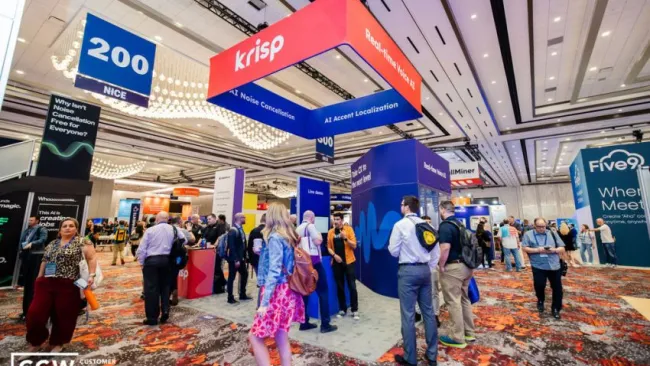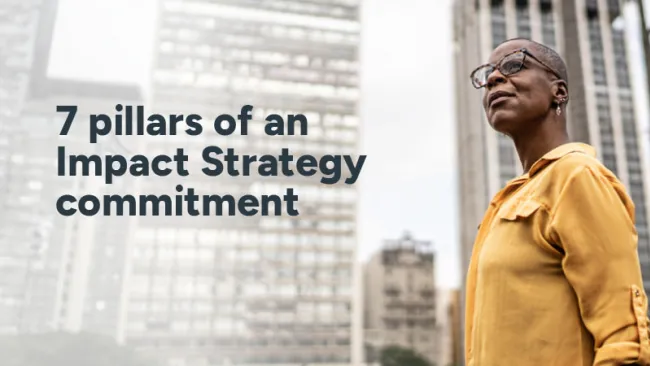Alongside customer experience, discussions around the importance of “employee experience” have taken center stage. And for good reason, research from Gallup found that a great employee experience leads to some great financial benefits -- highly engaged employees result in a 23% increase in profitability. Employee experience is being noted as a priority for companies looking to attract, retain, and grow a strong workforce. In fact, 92% of employers worldwide said that employee experience will be a priority over the next three years, according to a 2021 survey from Willis Towers Watson.
For its growing prominence, “employee experience” remains a nebulous term with sometimes conflicting definitions. And consensus on how to make an employee experience great is even more difficult to reach.
Many people ask, “what exactly makes a great employee experience?”
More than just high wages, a great employee experience emphasizes employees’ well-being and provides tools and resources for workers to succeed. In the contact center, here’s a checklist of attributes that make an employee experience great:
Employee well-being
- Living wages
- Customizable benefit packages
- Flexible work environment
- Generous PTO/sick time
- Robust employee resources that make daily work enjoyable
Tools
- Self-paced learning tools and courses are available to the associates at no cost to them
- Modern technology set up allows associates the freedom to operate with more flexibility (wireless headsets, for example)
- Employee performance and development is guided and tracked in a modernized, interactive and engaging way
Resources
- Clear paths for growth and promotional opportunities
- Supportive, empathetic managers and leaders to guide and mentor associates
- Associates feel connected to a team through fun & engaging events (onsite and virtual)
- Associates feel empowered to share feedback and have an opportunity to collaborate in solution workshops that empower them to identify root cause and potential solutions
Too often, however, the contact center workplace isn’t naturally set up to provide these critical employee experience building blocks. Most organizations have disconnected CX and EX strategies that are focused on efficiency and process, not employees as individual people. Hiring is skills-based, and employee training occurs in traditional instructor-led, single modality classroom environments. Employees may have undefined KPIs and inconsistent QA framework, with disparate applications, systems, and technologies that cause associate friction and frustration. Employee voices are not heard and engagement is not prioritized, so development and career pathing may be disjointed at best, non-existent at worst.
Best practices to elevate the employee experience
In our work with clients, we’ve learned there are opportunities to improve the employee experience with simple steps throughout the contact center employee lifecycle:
- Recruiting, Hiring & Onboarding
- New Hire Training & Nesting
- Production
- QA & Performance Management
- Employee Engagement & Retention
Along each point in the employee journey, companies can make decisions to enhance employee well-being, innovate with tools, provide resources, and most importantly listen to employees to learn how to continuously improve. Here are a few specific examples across the contact center associate lifecycle:
Competitive compensation -- Living wage PLUS meaningful benefits: Wage competition extends beyond the BPO market to any low-wage job. The Great Resignation paired with economic inflation drove wages up, so be sure your company stands out with compensation commensurate with the stress, productivity expectations and responsibilities of the job.
In addition to wages, consider offering a wider suite of benefits that are more meaningful to your employees. Perhaps a retirement plan isn’t as enticing as a flexible schedule or programs to support student loan payoff. Giving employees the choice of which benefits to take advantage of allows employers to meet the needs of employees within every phase of life.
The engaged virtual delivery model: The past two years proved that contact center productivity remains high even when employees work remotely. However, employee engagement often falls by the wayside in the virtual environment. Where possible, a hybrid model to allow employees to work more flexibly while providing valuable in-person collaboration, training, and community opportunities.
Consider specialized training for leaders and managers that teaches unique skills and best practices to effectively drive virtual employee engagement. Perhaps there are tools that can be introduced or automated so that leaders can focus more on offering support for their front line and less on administrative tasks.
For remote employees, use video and other interactive tools to include them and keep them engaged with the larger team. And consider virtual communities and metaverse-inspired employee hubs that are quickly becoming the future of employee operations.
Gamified performance awards & incentives: People are naturally competitive and love a good game. Make performance milestones fun and community-oriented. Ensuring they are tied back to KPIs keeps the CX end goal front and center. Keep in mind the awards, recognition, and incentives that people can showcase and brag about.
Associate-led intent mapping, problem solving & solution identification: Associates are closest to customers, therefore they will have some great ideas in how to improve interactions and solve problems to satisfy customers and employees at large. Give them the opportunity to identify the customer journey and pinpoint bottlenecks. Empower them to develop solutions to resolve issues (large and small) and provide insight to longer-term improvement projects.
Voice of the Employee research, spanning entire employee lifecycle: Employees want to feel valued and heard. Deploy a voice-of-the-employee program as a central part of company strategy that encompasses all parts of the employee lifecycle. And remember it’s not enough to collect feedback—share actions taken based on feedback so employees know their voice matters and can make a difference to the organization.
These are just a few best practices to enhance employee well-being and provide the most impactful tools and resources to spur a great employee experience at your organization. Most firms are still early in their employee experience journey, so there is plenty of runway to move first and stand out among competitors for the best and most engaged workforce.


